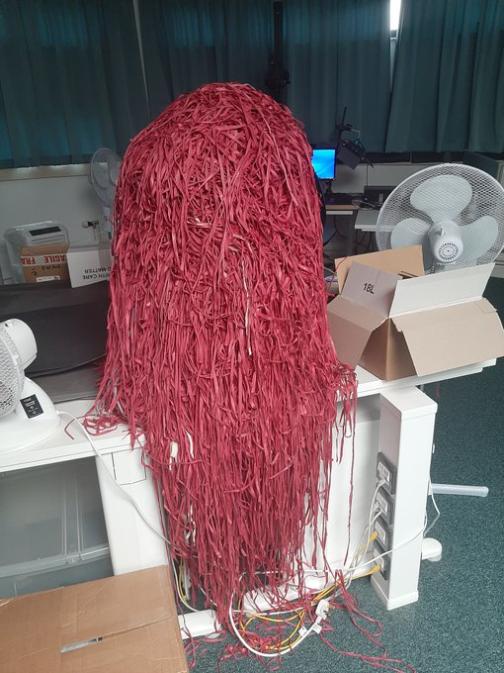Borthwick Newsletter - September 2024
Posted on 29 August 2024
September in the Archives - delve into our catalogues with this month’s featured description
Diary of a family holiday to Edwinstowe, Nottinghamshire, by Jean Rowntree, with postcards and local pamphlets inserted, September 1917. [Lawrence Rowntree Archive, LROW/15/5]
What’s New?
As we head into September the university campus is starting to get busier. With Freshers Week and a new semester on the horizon we’ve been preparing for introductory visits to the library and archives and new classes and workshops in our teaching spaces.
We will be marking the new month with the launch of two new public exhibitions - ‘World Turned Upside down: The weird and wonderful world of the chapbook’, and ‘The Women’s Land Army in North Yorkshire’. Both exhibitions are free and open to all and we hope you’ll find time to come and see if you’re in the area. You can find out more about both of them in this month’s ‘Borthwick Out and About’ section.
Last month we also said goodbye to our Ancestry team, as the digitisation element of our project with them is now complete. The team has been with us since April 2021, and to mark the project end we’ve got a few statistics for you. We launched our Parish Register collection (baptisms, marriages and burials) on Ancestry in August 2022. That collection alone contained over two million names, and since then, the team have taken a further 887,100 images of items in our collections, which are now being indexed.Whilst they’ve been imaging archives, the team have very kindly also been replacing the old pink legal tape around folders with new archive-quality tape. In total, they’ve removed 14kg of legal tape, and replaced it with a whopping 10.4km of archives tape – that’s 104 rolls!!
We’ll keep you posted as new records are released, but a massive thank you goes to our Ancestry operatives over the last three years – Mary, Lauren, Carrie, Mo, Lizzie and Joseph. Thanks also to Peter and Nikita from Ancestry who have ensured the work so far has run smoothly.
New Accessions
We received nine new accessions in August. Three of these were additions to our University of York Archive, including postcards of Heslington Hall, financial records, and a series of lecture and media cassette recordings dating from the 1980s to 2006. We’ve also added recent meeting minutes and financial records to the Purey Cust Trust Archive and some photographs and programmes to the Joseph Rowntree Theatre Trust Archive. However our most significant new addition was the Robert Holman Archive which came in just too late to be featured in our last newsletter. Holman was born into a Yorkshire Quaker family in 1952. Having left school at 15, he worked as a newspaper seller at Paddington Station in London, writing plays in his free time and winning an award for ‘Most Promising Playwright’ for his work ‘German Skerries’ in 1977. Many of his plays featured the landscapes of his youth - the Redcar steelworks in Teesside, a farm in Middlesbrough, or the North Yorkshire coast - but the subject matter could be surreal or fantastical, albeit always with a focus on the complexities of human relationships and questions of trust and responsibility. His plays were produced by the Royal Shakespeare Company and the Royal Court Theatre in London, amongst others, and his archive, which comprises 35 boxes of material, includes a wealth of correspondence, drafts, production papers, programmes and reviews covering a career spanning more than forty years. Together, it makes for another valuable addition to our Writing and Performance Collection.
New Catalogues
Number of archival descriptions on Borthcat on 1st September 2024: 136,306
In August we made a small but important update to our Rowntree Family Papers with the addition of four boxes of photographs. The photographs came to us via the Joseph Rowntree Foundation who have long collected and preserved Rowntree family material. The photographs cover primarily Joseph Rowntree, his first wife Julia and second wife Emma Antoinette, his children, and his son Benjamin Seebohm Rowntree’s wife Lydia and their children, as well as various other members of the family dating from the mid 19th century to 1954. Some of these photographs are extremely well known and have been used in many publications and articles over the years, but others are less so.
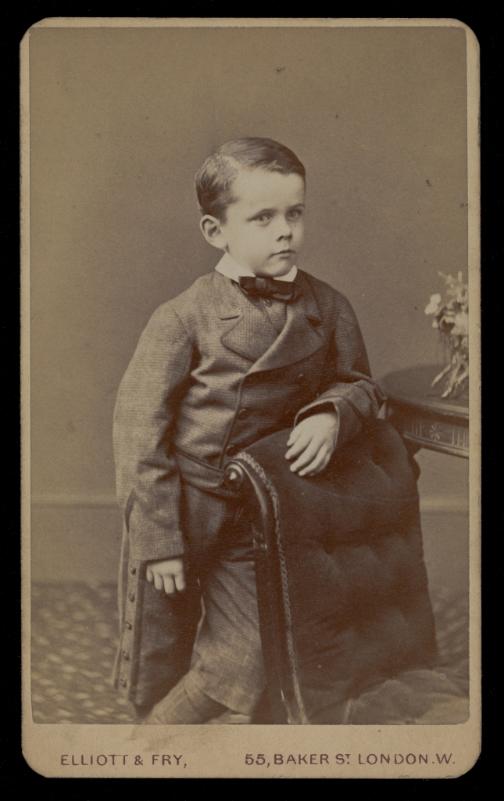
The photographs of Joseph’s sister Hannah and her family include a very young George Masterman Gillett, Hannah’s son who went on to become a Labour MP under Ramsey MacDonald, and Arthur Bevington Gillett, another son who married into the Clark’s shoemaking family of Somerset and worked for Barclays Bank.
There are also some beautiful photographs of the exterior and interior of Cherry Hill at Brandsby to enjoy - the Arts and Crafts style home built by Fred Rowntree for his cousin Oscar Frederick in 1909 - as well as engagement photos of Seebohm Rowntree’s son Julian taken inside The Homestead, York.
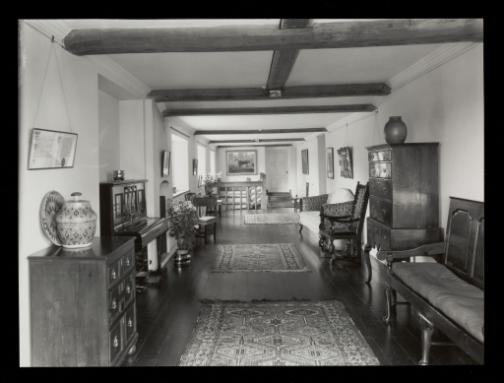
You can make an appointment to view the photographs onsite or order copies via our copying service.
News from Conservation
A great deal of the work carried out by our Conservation team tends to be ‘behind the scenes’ but it is no less vital for being rarely seen by the public. In last month’s newsletter we highlighted the key role they play in our reprographics service through the preparation of historic wills so they can be safely copied for researchers. In August the team has been busy with another essential task - monitoring environmental conditions in our strongrooms, searchroom and exhibition spaces. The popular cliché of the ‘dusty archive shelves’ should never be true of a well-run archive and it certainly isn’t true of the Borthwick where we regularly measure light levels, check the contents of pest traps, and utilise dust monitors throughout the building. Making sure our archives are kept in appropriate conditions is crucial for their long term preservation and something we are assessed on as an accredited archive.
And speaking of preservation - one of our conservators, Catherine Firth, has also been responsible for the installation of our Women’s Land Army exhibition - and will shortly be installing the new chapbooks exhibition as well. In addition to selecting (and often creating) appropriate book and document supports for exhibitions, Catherine also undertakes the tricky task of making convincing surrogates of some of our archival documents - which are frequently so convincing it’s hard to tell they are surrogates. Original documents are photographed by our reprographics team before they are carefully cut out and mounted on cardboard. The use of surrogates means our exhibitions can be displayed for long periods of time without any damaging effects on the unique originals which remain safely stowed in the strongroom.
One of the most challenging tasks undertaken by our Conservators however is the repair of damaged archives. We aim to make all of our archives available for research, but in some cases access is only possible following painstaking conservation work. Several years ago we received a large deposit of 19th century Rowntree family letters. While most were in good condition, a small number had been damaged by water at some point in their past or had clearly been nibbled on by various pests. Catherine has been working through these in recent months and in August she reached the most challenging items. Documenting the damage, deciding on the best course of action and then carrying out the necessary repairs is a slow process requiring a great deal of skill and patience, but one which we hope will finally reveal the secrets of these mystery letters!
Borthwick Out and About
On 30th August we welcomed approximately 20 members of the Merchant Taylors' Company of York to the Borthwick, for a talk and hands-on research session with their own archive. Hopefully the members of the History Group will be coming back to undertake their own research in future.
Looking forward, we’ll be taking part in the university’s open days on the 6-7th September with our usual display of archives from across our collections. We’re also very excited to launch the latest exhibitions from the Archives and Research Collections this month. ‘World Turned Upside down: The weird and wonderful world of the chapbook’ focuses on a particularly rich and accessible part of printing history. ‘Chapbooks’ were designed for children, to educate and to entertain them. Sold by travelling salesmen, the ‘chapman’, they covered a range of topics from fairy stories to religious tracts and were produced in large numbers for a population avid for stories. The craft is being kept alive by modern printers today and the exhibition will feature modern chapbooks, some of them beautifully crafted works of art. The free exhibition will be in the Samuel Storey Gallery on the 3rd floor of the Raymond Burton Library.
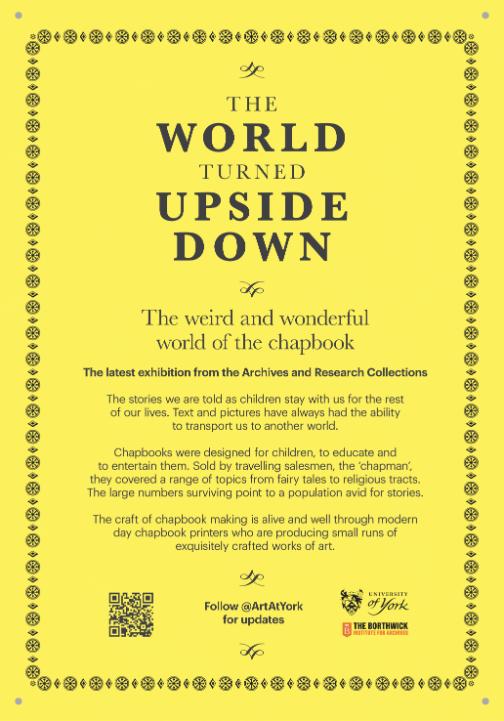
While you’re in the building, why not also take a look at our new Women’s Land Army of North Yorkshire exhibition which can be found in the display cases on the ground floor, beside the stairs leading up to the Borthwick reception. The exhibition draws on the detailed records kept by Lady Celia Milnes Coates, Chairman of the North Riding Committee responsible for the recruitment, work and welfare of the region’s Land Girls during the Second World War. The records now form just a small part of the Milnes Coates Archive, gifted to the Borthwick in 2013. Featuring a mixture of original notes, letters, promotional materials and photographs, the display will explore the challenges and rewards of the Land Army life and the legacy of the hundreds of women who answered the call to help and the unique archives that tell their story.
Both exhibitions will be open from 8am-10pm from September through to Spring 2025. The Raymond Burton Library can be reached via the main university library and the exhibitions are fully open to the public.
Archive of the Month: Papers given by Mr and Mrs Tindall, Scarborough
What is it? Records relating to the Dey and Blanshard families between 1797 and 1905.
Where can I find it? The archive has been listed and is available on our online catalogue Borthcat.
Why is it Archive of the Month?
This small archive has much in common with the Suffield Family Papers featured in our July newsletter, following as it does the lives of various members of an extended family both at home and abroad. Indeed it’s tempting to wonder if their lives might have crossed - in Yorkshire, if not on their travels, for while the Suffields ended up in the new colony of Australia, the Blanshards tried their luck in 1830s America.
The Deys were a farming family from Knapton. In 1820 Francis appeared in the Yorkshire Gazette, selling 67 oak trees and 2 elm trees on his farm - incidentally the auction took place at St Antony’s Hall at Peasholme Green, later the home of one Borthwick Institute for Historical Research. The rest of the information we have about Francis comes from the Tindall archive which includes what are likely to be his memorandum books ‘or Daily Journals’ recording accounts for his house and farm between 1797 and 1805, and detailing the weather, farming, and price of crops of livestock in 1817 and 1825. We also have one of his farming recipes advising on how ‘to dry a cow of her milk,’ as well as treatment for sore teats. It appears Francis educated one of his sons at Mr Nixon’s Academy at Thorp Arch as we have the 1826 account for payment of fees and young Charles’ copybook. Another member of the Dey family became a Commercial Traveller. Upon his death his children Frank and Ada were put forward for free admittance to the Commercial Travellers School in Pinner, London, as evidenced by the notice of election and card soliciting votes for them, a common practice at the time for such schools.
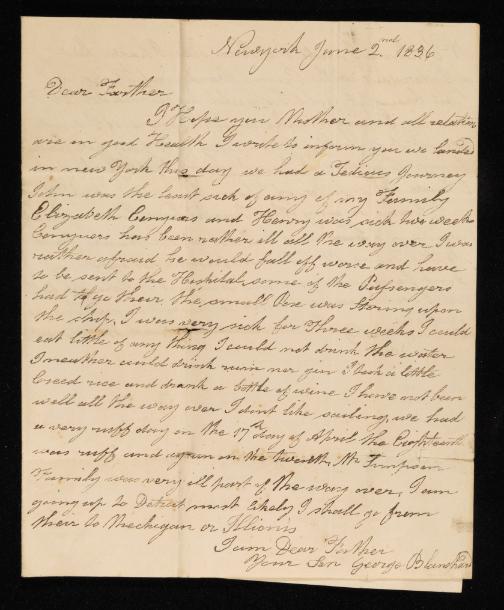
In 1843 an Edward Dey, farmer of Knapton and possibly the son or grandson of Francis, married Elizabeth Blanshard of Escrick, thus connecting the two families. It is through this connection that the archive also includes two fascinating letters from 19th century America. The first is dated 1836 and consists of a single page account of George Blanshard’s less than enjoyable sea voyage to New York. The ‘ruff’ seas led to him being very sick for three weeks, during which time he could not drink the water nor any rum or gin, but did manage a bottle of wine. The second, written by John Raimes Blanshard in 1853, is rather more detailed, describing the author’s farming endeavours in Marion County, Ohio, his reaction to news from home, and his feelings about the ‘gold rush’ then underway. ‘There is a great many gone from here to California,’ he writes, ‘some has come back rich and some with nothing.’ Evidently he did not intend to try his luck or risk his income the same way…
Like the Suffield papers, the records of the Deys and the Blanshards offer a glimpse of the changing fortunes of a Yorkshire family over the course of the nineteenth century, a time when the challenges of earning a living from the land drove many to seek out better opportunities in the new cities and colonies overseas. Interestingly, the survival of this small archive was not the family’s only public legacy. One of their descendents, Harry Blanshard Wood, son of John Wood and Maria Dey, was the only soldier from the rural East Riding to be awarded a Victoria Cross for his actions in the First World War!
We’ll be back in October with more news and events from the archives.

